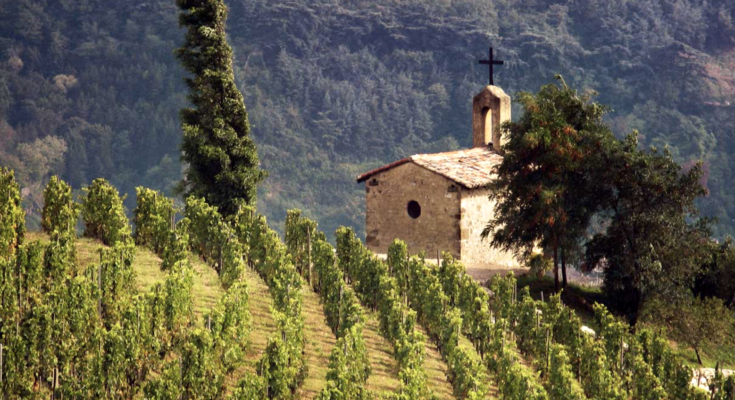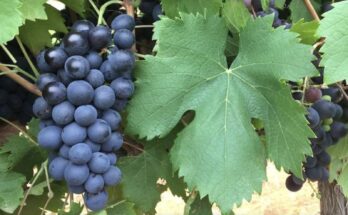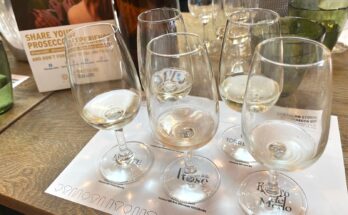A new series on WineFolio for the new year – “Around the world in eighty grapes”. I’ll be taking a look at the most important grape varietals, with particular emphasis on what that means for our part of the globe. New Zealand doesn’t really grow more than about 25 of them commercially, but somewhere like Italy is reckoned to have over a thousand! We will all have our personal favourites (ahem, Chardonnay).
Each region will have strengths for growing and making wine from a certain grape. While a varietal might share a core character, its specific profile can vary dramatically across different wine regions around the world. It is fair to say that a wine made from a grape variety will change according to factors such as where it’s grown, the climate, and the winemaking techniques employed. I’m going to kick off the series with a very versatile red grape – Syrah, and look at how it can differ across key wine regions. Every now and then, the tasting groups I’m involved with will have an evening of looking at one varietal – here’s a link to a Syrah night as an example – www.winefolio.co.nz/?p=6405.
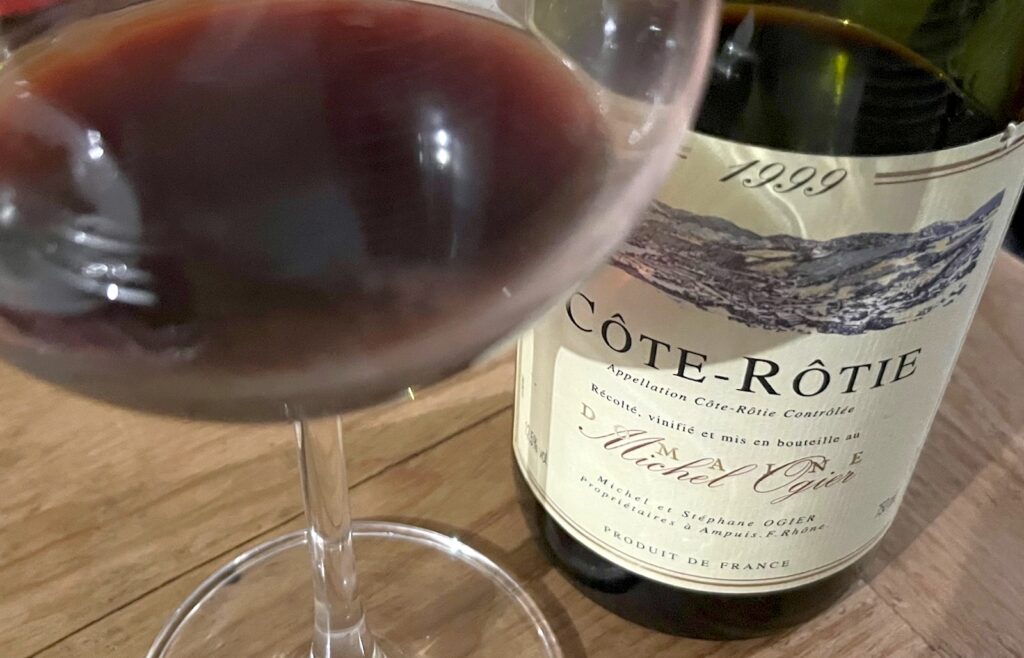
Let’s start with France, and in particular the Rhône Valley.
- Key Regions: Key places to look out for here are Côte Rôtie, Hermitage, Crozes-Hermitage, Saint-Joseph and Cornas.
- Côte-Rôtie, which translates to “roasted slope,” and refers to the steep, sun-drenched hillsides where the vines are planted, often on terraces carved into the mountainside.
- Hermitage is perched on a steep, rocky hill above the Rhône River, and its wines reflect the distinctive terroir – hot slopes, stony soils, and a microclimate that is conducive to producing wines with great concentration but also elegance.
- Saint-Joseph lies on the right bank of the Rhône River and sits between Côte-Rôtie to the north and Crozes-Hermitage to the south.
- Climate: Continental, with significant diurnal range (temperature variation) between day and night.
- Flavour Profile: In the Northern Rhône, Syrah tends to have a more restrained and complex profile. The scents will show earthy, smoky, and savoury notes, but also black pepper, violet, and leather. The fruit profile is usually quite dark, with bramble and blackcurrant leading the way. Wines from the northern part of the Rhône often have a distinctive minerality – critics describing them as having a ‘steely’ or ‘flinty’ quality.
Further south you can expect a darker, more robust set of flavours – heading ‘New World’ in style. “GSM” – Grenache, Syrah, Mourvedre – is a classic southern Rhône blend and has the Syrah as the structural element in the mix. In one of the most highly-rated appellations – Châteauneuf-du-Pape, you’ll usually find the wines centred on Grenache (often 60-80% of the blend), but with Syrah playing a supporting role. The AOC allows up to 13 varietals to be used in the blend. - Tannins & Acidity: Syrah from this region will usually have a core of tannin, with good examples balancing that with bright acidity and therefore having great aging potential.
- Notable Characteristics: Wines are often well structured and age-worthy, with a balance between fruit, spice, and earthiness. Some areas, like Côte Rôtie, will often blend in a small percentage of Viognier, which adds floral notes to the perfume. Wines from the Côte Rôtie have, in recent years, started to attract eye-wateringly high prices for the best examples.
- Producers: Some of the top producers of Rhône reds include Jean-Louis Chave, M. Chapoutier, Guigal, Paul Jaboulet Aîné, René Rostaing and Domaine Jamet.
- Sample review: Jamet Côte Rôtie – www.winefolio.co.nz/?p=7835.
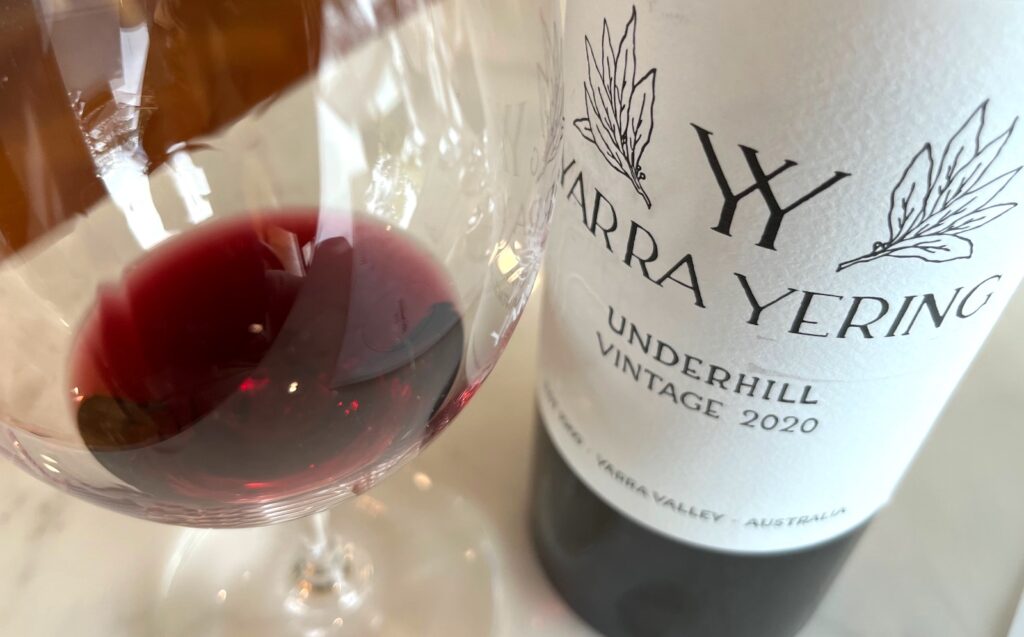
Australia has its own claim to Syrah – where pioneers re-named the grape ‘Shiraz’. It is reputed to have the oldest Syrah grapes in the world – located in the Barossa Valley, established by European settlers – one of the first regions where Syrah was planted in Australia. These legacy vines, some of which date back to the 1840s, are incredibly significant both in terms of age and historical value, as phylloxera led to Syrah vines in Europe being uprooted and burned, making these Barossa examples the oldest still in use.
- Key Regions: Barossa Valley, McLaren Vale and Clare Valley in South Australia. Hunter Valley in New South Wales, and a few regions in Victoria such as Heathcote.
- Climate: Warm to hot climate, with significant sunshine and ripe fruit development.
- Flavour Profile: Australian ‘Shiraz’ tends to be fruit-forward and rich. Expect ripe, jammy fruits like boysenberry, plum, and cherry. There is often a characteristic black pepper and toasted spice; but also chocolate, liquorice, and a touch of mint. In South Australia the wines can be full-bodied with a sweet fruitiness. Victorian wines are usually more restrained in terms of ripeness, but can still be real blockbusters, with high alcohol and bold flavours.
- Tannins & Acidity: Tannins are usually softer and the acidity can be lower, making the commercial end of the market very drinkable in their youth.
- Notable Characteristics: Australian Shiraz often has a more opulent and juicy style, with some wines showing high alcohol levels and a rich, round mouthfeel. You’ll often hear from fans of the style state that the best examples ‘taste best around the twenty year mark’ – so if cellared well, bear this in mind.
- Producers: Everyone will have their favourites. I particularly like Shiraz from Victoria, so… Jasper Hill, Simon Osicka, Yarra Yering and Lethbridge; but South Australia is the classic style – Yalumba, Penfolds, D’Arenberg and Henschke.
- Sample reviews: Victoria (Jasper Hill): www.winefolio.co.nz/?p=10694. Barossa (St. Hugo): www.winefolio.co.nz/?p=7466.
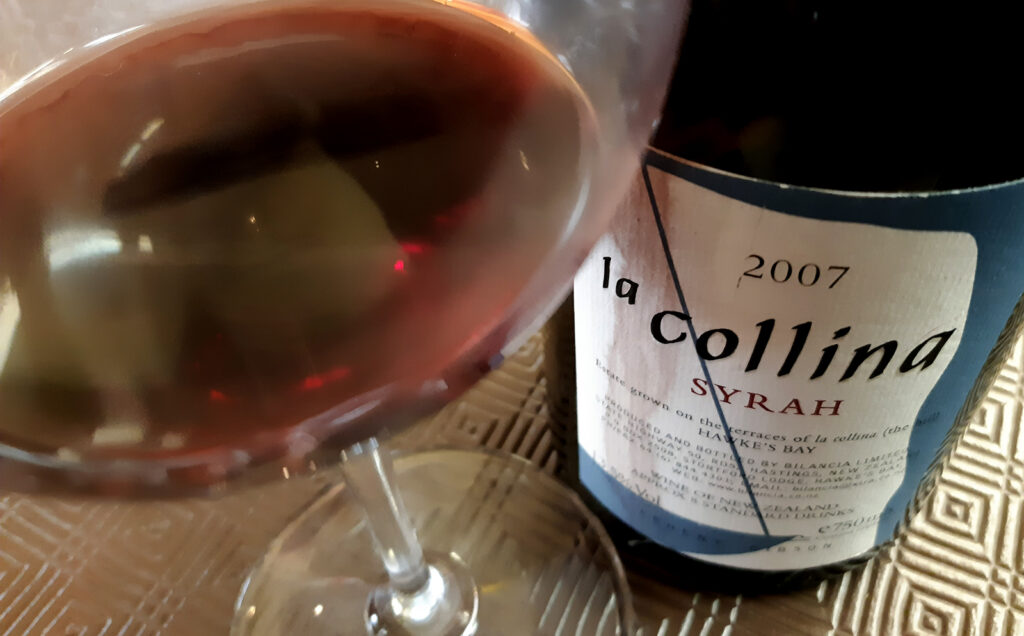
Here, in New Zealand there are great hopes for Syrah. The world loves Marlborough Sauvignon Blanc, and the best recognised red is arguably Pinot Noir. Syrah isn’t grown everywhere – South island only has a little; but Hawke’s Bay is certainly backing the grape to gain acclaim. When I was talking to star producer Elephant Hill, I posed this question: “I do think Syrah is a defining wine for Hawke’s Bay. I wonder why it hasn’t it hasn’t really taken over as that flagship varietal? Is it because there’s just not enough of it?”
Winemaker, Hugh Crichton had this response:: “I don’t know if it is just that. Perhaps we’re still coming to grips a bit with wine style. We probably often made Syrahs that were too big, chunky and oaky. The natural path for Hawke’s Bay Syrah is a bit lighter, not so infatuated with colour, and fragrance. Become a bit more restrained and elegant – I hate saying this, but closer to that Pinot Noir style. With the acidity, they’re always going to age well. As long as you’ve got concentration of flavour through low yields in the vineyard. I wonder if there’s a bit of a disconnect between producers and consumers at the moment. There’s been big challenges in the past with Syrah where it has been over-cropped, too much pepper, too spiky, too skeletal. It’s like Pinot – you need to invest in the vineyard and get your crop levels down”.
- Key Regions: Hawke’s Bay, Waiheke Island and Northland.
- Hawke’s Bay has a few key sub-regions with specific attributes. Gimblett Gravels follows the path of an extinct riverbed, with stony soils. Bridge Pa has a richer terroir and makes plush examples with exquisite perfume.
- Waiheke Island sits in the Hauraki Gulf offshore from Auckland city and attracts a million visitors a year. The wines here are rich, with an energy bursting through the palate.
- Climate: It is grown in places that are cooler than many of the other Syrah-producing countries, and in Waiheke Island’s case, with maritime influences.
- Flavour Profile: New Zealand Syrah is often more restrained and elegant compared to the bold, fruit-driven styles of Australia and California. Look for flavours of blackberries, plums, and cherries, often balanced with subtle spices, floral notes, and some earthy character. The wines can show a distinctive white pepper character (compared to Australia’s black pepper) and have a fresh, tangy brightness.
- Tannins & Acidity: New Zealand Syrah tends to have moderate tannins with bright acidity, making the wines food-friendly and approachable.
- Notable Characteristics: The cooler climate style allows for more aromatic and balanced wines that often combine fruit with an earthy, spicy edge. These wines can be quite complex and age-worthy, especially from the best producers.
- Producers: Some of the top producers of Syrah include Bilancia, Elephant Hill, Church Road, Trinity Hill, The Landing, Passage Rock, Man O’War, Paritua and Radburnd.
- Sample reviews: I produce a benchmark ‘Top 10 Tasting’ of NZ Syrah every two years – here are the last two examples: www.winefolio.co.nz/?p=8820 and www.winefolio.co.nz/?p=3198.
As a key player in global red wine production, it is natural that a country the size of the United States will feature in any list of Syrah.
- Key Regions: California (Paso Robles, Napa Valley, Sonoma) and Washington State (Columbia Valley)
- Climate: Warm to hot climates, but the cooling influence of the Pacific Ocean can provide moderation to temperatures in the coastal regions.
- Flavour Profile: In California, the perceived style of Syrah heads towards black to red fruit flavours, with a focus on very ripe fruit characters. The wines also show a lot of spice, sometimes with smoky elements. In cooler climates like Sonoma or parts of Paso Robles, the wines critics see more acidity and balance.
- Tannins & Acidity: Similar to Australia, Syrah from California often has softer tannins and a round, plush mouthfeel.
- Notable Characteristics: While some California Syrahs can be a bit more high-alcohol and fruit-driven, others – especially from the cooler areas – may show more balance and complexity, with notes of olive, dried herbs, and a savoury edge. Some regions also produce Syrah with a slightly more restrained, Old-World style, especially in areas like Santa Barbara or Monterey.
- Producers: Some of the top producers of Syrah include Carlisle, Tabali, Alpha Omega, Ramey, Schafer and Caldwell.
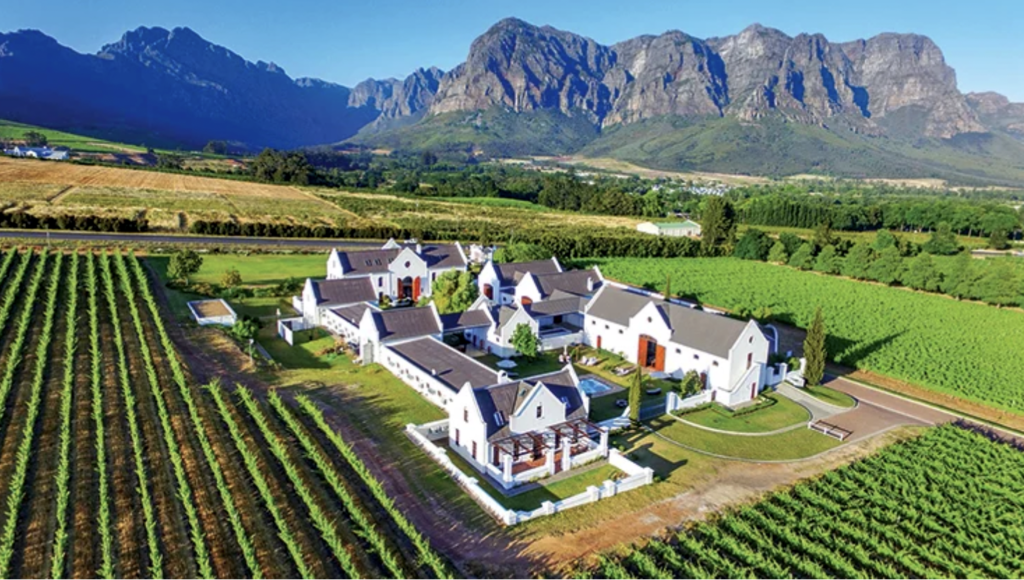
I visited South Africa quite a few years ago, and I have to say that regions like Paarl and Stellenbosch (I was based in Cape Town) were an absolute delight to visit. When I was there, varietals like Syrah were starting to gain some attention overseas.
- Key Regions: Stellenbosch, Swartland, Paarl and Western Cape
- Climate: Moderate to warm, with some coastal influence in areas like Western Cape.
- Flavor Profile: South African wines are often considered ‘New World’ – their Syrah often combines the fruit-forward character of Australia with the complexity of european wines. Expect dark fruit flavours like blackberry and plum, but with added layers of olive, spice. There’s often some pepper in the mix and a certain earthy, rustic quality.
- Tannins & Acidity: Tending to have good acidity and moderate tannins, making them versatile for pairing with a variety of foods.
- Notable Characteristics: Syrah from South Africa often shows a lot of character, with a mix of ripe fruit, spice, and earthy notes. The wines are generally approachable, but many have good aging potential, particularly those from regions like Swartland, which is known for producing more structured and intense examples.
- Producers: It’s a very diverse range, but look for Stellenzicht, Sadie Family Wines, Thelema Mountain Vineyards, Duncan Savage, Klein Constantia and Rust en Vrede.
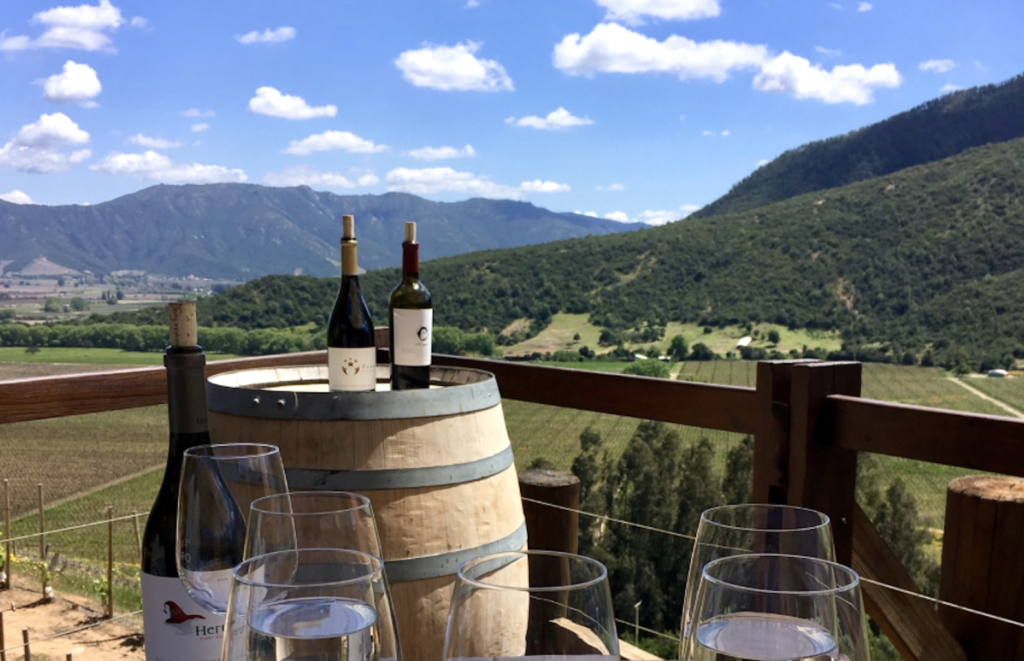
South American wines don’t get the exposure or kudos that they deserve here in New Zealand. Chile has a similar breadth and diversity of wines and regions to us, and many of their top wines will have a familiarity in style to wines from here. Generally, the wines are much more recognised in Europe.
- Key Regions: Maipo Valley, Colchagua Valley, Aconcagua
- Climate: A climate with warm, sunny days and cool nights, especially near the coast.
- Flavour Profile: Chilean Syrah typically offers a balance of ripe fruit and spice, with dark fruits like plum and bramble, as well as a signature peppery and smoky note. The wines can be quite expressive with a fresh acidity as well as a touch of earthiness – the profile is similar to NZ.
- Tannins & Acidity: Their Syrah often has moderate tannins and bright acidity, which provides a solid structure.
- Notable Characteristics: Syrah from Chile can be more restrained than its counterparts from Australia and California, but still has a good balance of fruit and savoury elements, making it a versatile wine for pairing with food.
- Producers: Montes Alpha, Concha y Toro, Undurraga, Almaviva, Errazuriz and Tabali.
For Argentina, you can pretty much cut and paste what I said about Chile – except for their Malbec, which does have at least some profile here in Australasia. Syrah has been growing in popularity as well, especially ones from regions with cooler climates such as Patagonia and higher-altitude areas in Mendoza.
- Key Regions: Mendoza and Patagonia.
- Climate: High-altitude vineyards, with cool nights and warm days are key points to look for.
- Flavour Profile: Syrah from Argentina tends to be full-bodied, rich and layered, with a silky mouthfeel. In high-altitude regions like Mendoza, the wines can show good acidity, which helps balance the ripeness of the fruit.
- Tannins & Acidity: The tannins can be quite firm, and the wines typically have good acidity, boding well for their aging potential.
- Notable Characteristics: Argentine Syrah can vary from more fruit-forward, approachable styles to more serious, structured wines that display a combination of fruit, savoury notes, and spice. Excellent quality at a comparatively affordable prices is worth noting.
- Producers: Catena Zapata, La Posta and Achaval-Ferrer.

